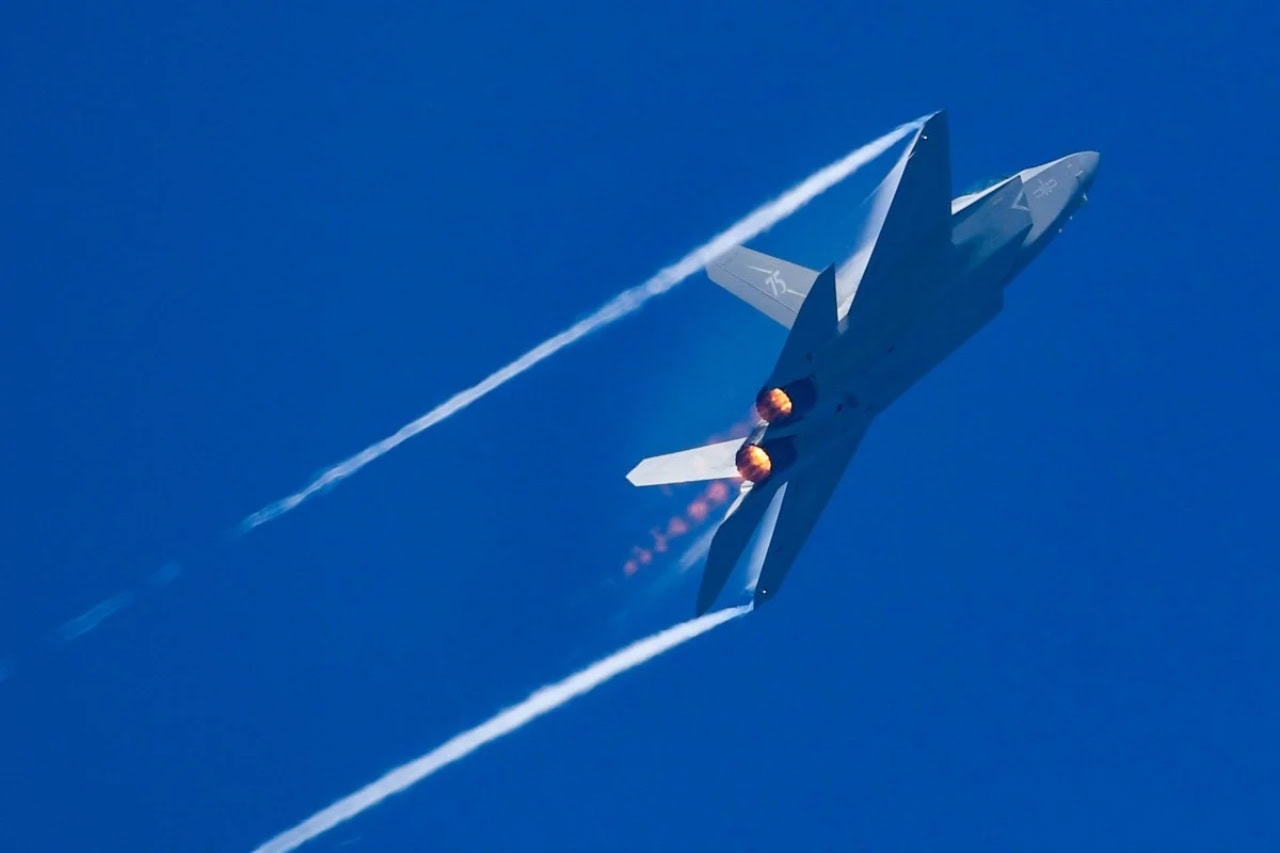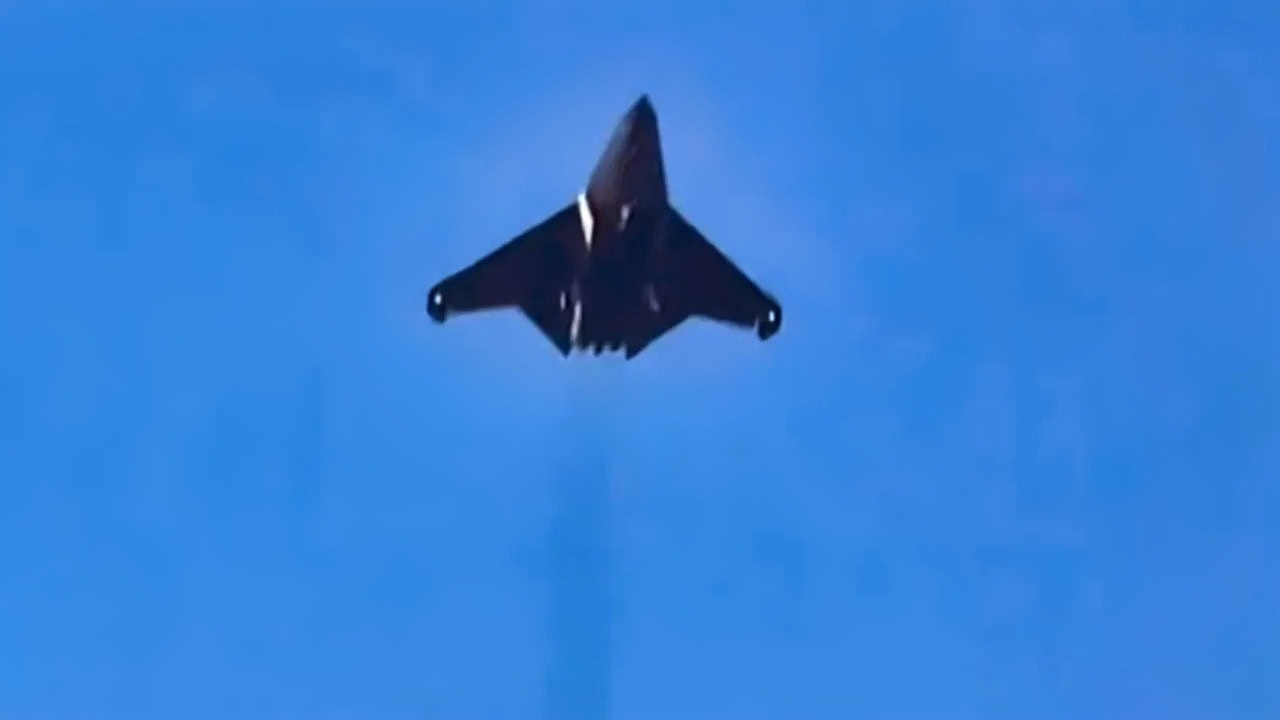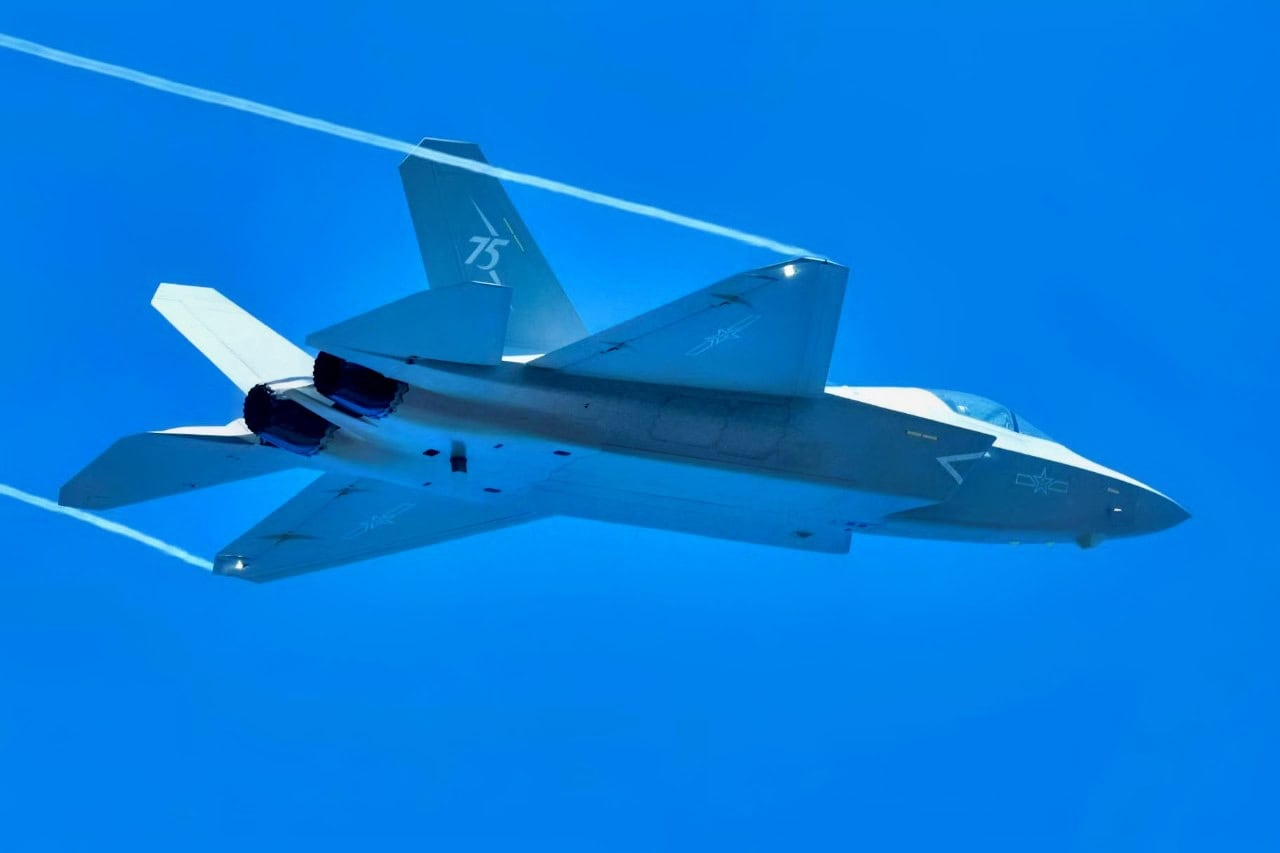The Challenge the U.S. Military in the Sky: The People’s Republic of China (PRC) is well-known for its theatrics when introducing a new-generation weapon system, particularly tactical combat aircraft. The famous “first flight” of the Chengdu J-20 in January 2011 set the tone for these events.
The date for this flight was intended to be a very public slight to the visiting then-United States Secretary of Defense Robert Gates. Since then, the J-36 design team and the Shenyang Aerospace Corporation (SAC) have been competing for whose newest aircraft could attract the most attention from international defense and aerospace media outlets.

J-35. Image Credit: Chinese State Media.
This competitive stance probably explains why, this past December, both Chinese military aerospace flew their latest design concept aircraft at about the same time. Chengdu flew their massive three-engine J-36 and Shenyang with a new, more conventionally-sized fighter design designated J-50, J-XD, or J-XDS. Coincidentally, these flights occurred on December 26, Mao Zedong’s birthday.
Until recently, most of the publicity was focused on the new Chengdu aircraft, primarily because its size is closer to that of a bomber design. However, this past weekend, more images of the J-50 appeared on several social media sites, revealing more about that fighter’s design and likely performance parameters.
The PRC’s Stealth Dream
The new images of the J-50 show a designator we can use for now. One should remember that Shenyang is known for creating a new design with a series of labels before deciding on a final model number. What is immediately noticeable is that its design is not unlike other next-generation stealthy concepts introduced recently.
Specifically, J-50 is another “tailless” configuration bereft of vertical control surfaces. Eliminating vertical tails or other fixed or moveable stabilizers or canards rids the aircraft of the most prominent radar-reflecting surfaces.

J-50 Fighter. Image Credit: Creative Commons.
However, it also means the aircraft utilizes flaps and other moveable surfaces for what is known as “constant adaptive control.” The United States mastered this technology in the 1980s with the B-2‘s “flying wing” design.
Developing this control authority requires intricate programming algorithms for the fly-by-wire flight control system (FCS). The aircraft is inherently unstable, so the FCS keeps it in a stable flight envelope.
The J-50’s external appearance also suggests extensive use of radar-absorbing materials that extend well down the fuselage. It also utilizes diverterless supersonic inlets, but the position of the inlets does not appear to present a direct line of sight to the front face of the engine fan frame, which is one of the keys to any low-observable design.
The overall shape of the J-50 wing is similar to that of the US B-2 bomber in that it resembles the Greek alphabet letter lambda, which gives the leading and trailing edges of the aircraft nearly identical sweep angles.
The aircraft is a twin-engine design, most likely powered by the same WS-21 turbofan model that powers the latest versions of Shenyang’s other famous fighter, the J-35.
The J-50 engine also appears to be fitted with 2-D thrust vectoring nozzles, which would likely be coupled to the FCS to help maintain the aircraft’s stability.
The combination of the wing design, the disposition of the air intakes, and the generous use of stealthy/radar-absorbing surfaces all combine to paint a picture of the PRC advancing as rapidly as possible in the development of a next-generation tactical air capability.
Similarities With Soviet Practices
Writing about Chinese advancements in tactical aircraft design tends to emphasize how these platforms would be used in offensive operations. At the same time, there is less discussion of how these aircraft would be used for the defense of the Chinese mainland itself.
There is also diminished appreciation for how the then-Soviet Union maintained two air forces and how that influenced the People’s Liberation Army Air Force’s (PLAAF’s) approach to air operations.
One armed services branch was for conducting offensive operations and long-range bombing, the Regular Air Force, or VVS in its Russian acronym, and the Air Defense Forces, or PVO, was the other.

J-50 Fighter from China
In a “one generation begets the next” manner, the J-50 is reminiscent of the Mikoyan MiG-31, which was designed primarily for the PVO in its day.
The Chinese design even resembles some of the characteristics of the MiG-31, especially in the disposition of the landing gear, and may very well be destined to fill the same kind of operational requirement.
This would make the J-50 responsible for preventing enemy aircraft or cruise missiles from entering PRC airspace.
This aircraft could easily perform the mission of launching and having the speed to intercept any enemy well outside the nation’s borders —but without being detected on the way to that intercept.
About the Author:
Reuben F. Johnson is a survivor of the February 2022 Russian invasion of Ukraine and is an Expert on Foreign Military Affairs with the Fundacja im. Kazimierza Pułaskiego in Warsaw. He has been a consultant to the Pentagon, several NATO governments and the Australian government in the fields of defense technology and weapon systems design. Over the past 30 years he has resided in and reported from Russia, Ukraine, Poland, Brazil, the People’s Republic of China and Australia.

